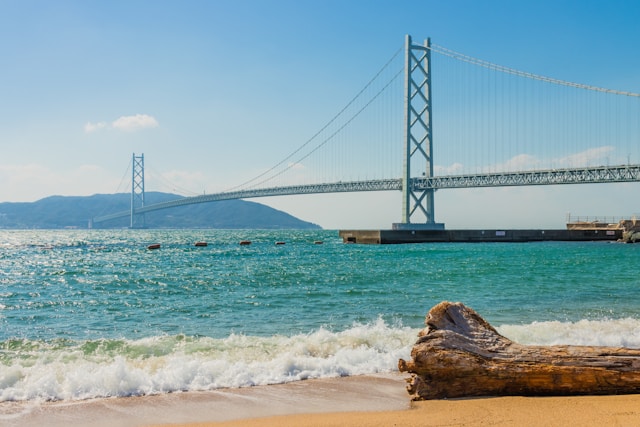
In the realm of civil engineering, few feats are as captivating as the construction of modern bridges. These structures are not just functional pathways connecting different locations; they are awe-inspiring pieces of architecture that push the boundaries of design and engineering.
From soaring cables to intricate designs, modern bridges are a testament to human ingenuity and a vital part of our urban landscapes. In this post, we’ll explore some of the most remarkable modern bridges around the world and the innovative engineering techniques that make them possible.
1. The Millau Viaduct, France
Towering over the Tarn Valley in southern France, the Millau Viaduct is an engineering marvel that holds the title of the tallest bridge in the world. Completed in 2004, this cable-stayed bridge reaches a height of 343 meters (1,125 feet), surpassing even the Eiffel Tower. Designed by architect Norman Foster and engineer Michel Virlogeux, the viaduct’s sleek, minimalist design blends harmoniously with the surrounding landscape.
One of the most impressive aspects of the Millau Viaduct is its construction method. The bridge was built using a technique called “incremental launching,” where sections of the bridge were constructed on the ground and then pushed into place. This innovative approach minimized disruption to the valley below, showcasing how modern engineering can balance progress with environmental concerns.
2. The Golden Gate Bridge, USA
While not as modern as some bridges on this list, the Golden Gate Bridge in San Francisco remains a defining symbol of American engineering. Completed in 1937, it was the longest and tallest suspension bridge in the world at the time of its opening. Spanning approximately 2.7 kilometers (1.7 miles), the Golden Gate Bridge features striking Art Deco design elements and iconic International Orange coloring.
The engineering challenges faced during its construction were immense, including strong currents, deep waters, and frequent fog. The bridge’s innovative design, featuring a series of cables suspended from tall towers, has made it resilient against high winds and seismic activity, further cementing its status as a modern engineering icon.
3. The Akashi Kaikyō Bridge, Japan
Another remarkable suspension bridge, the Akashi Kaikyō Bridge, holds the title of the longest central span in the world, measuring an astonishing 1,991 meters (6,532 feet). Completed in 1995, this bridge connects the city of Kobe on the Japanese mainland to Awaji Island. Its construction was fraught with challenges, particularly when the 1995 Great Hanshin Earthquake struck, causing the bridge’s towers to be built separately to account for potential seismic activity.
The Akashi Kaikyō Bridge showcases advanced engineering techniques, including a unique “variable tension” system that allows the bridge to adapt to changing environmental conditions. This adaptability is essential in an area prone to earthquakes, illustrating how modern engineering can address specific regional challenges.
4. The Sydney Harbour Bridge, Australia
Completed in 1932, the Sydney Harbour Bridge is another iconic structure that, while historic, represents the pinnacle of modern bridge design. Known affectionately as “The Coathanger” due to its arch-like shape, this steel arch bridge spans 1,149 meters (3,770 feet) across Sydney Harbour. The bridge not only serves as a crucial transport link but also as a stunning piece of architectural art that attracts millions of tourists each year.
The construction of the Sydney Harbour Bridge was a massive undertaking, employing thousands of workers and utilizing innovative techniques for its time. The bridge features a distinctive design that balances aesthetic appeal with structural integrity, demonstrating how form and function can coexist in engineering.
5. The Ponte Vasco da Gama, Portugal
Stretching across the Tagus River in Lisbon, the Ponte Vasco da Gama is one of the longest bridges in Europe, measuring 17.2 kilometers (10.7 miles) in length. Opened in 1998, this cable-stayed bridge was designed to accommodate the growing traffic demands of the region and serves as a critical transportation route. Its modern design features a series of expansive spans that provide a striking visual impact against the backdrop of Lisbon.
The Ponte Vasco da Gama showcases innovative construction techniques, including the use of precast concrete elements that allowed for rapid assembly on-site. This approach not only accelerated the construction timeline but also minimized the environmental impact on the surrounding area.
6. The Danyang-Kunshan Grand Bridge, China
The Danyang-Kunshan Grand Bridge, part of the Beijing-Shanghai High-Speed Railway, is the longest bridge in the world, measuring an astounding 164.8 kilometers (102.4 miles). Completed in 2010, this engineering marvel primarily traverses rice paddies, demonstrating the scale of modern infrastructure development in China.
Constructed using advanced engineering techniques and materials, the bridge features a robust design that ensures stability in varying environmental conditions. Its construction involved collaboration among thousands of engineers and workers, showcasing the power of teamwork in large-scale projects.
In Conclusion
Modern bridges are more than mere functional structures; they epitomize human creativity, resolve, and advancement. From the elegant arches of the Millau Viaduct to the engineering prowess of the Akashi Kaikyō Bridge, these impressive achievements in engineering have reshaped our landscapes and connected communities in ways we once thought impossible. With the aid of innovations like metal fabrication in Utah, the future promises even more extraordinary bridges that will continue to transform our skylines and redefine the boundaries of civil engineering.




